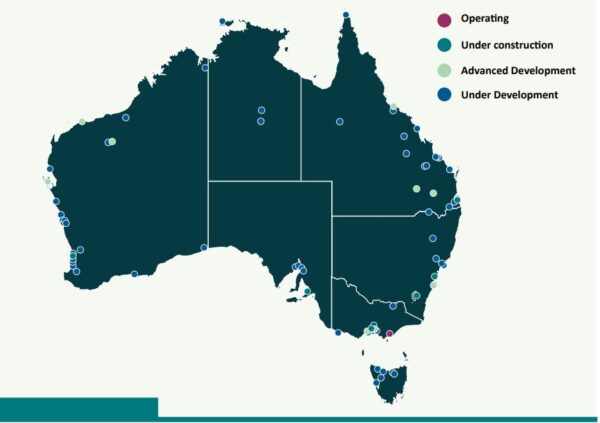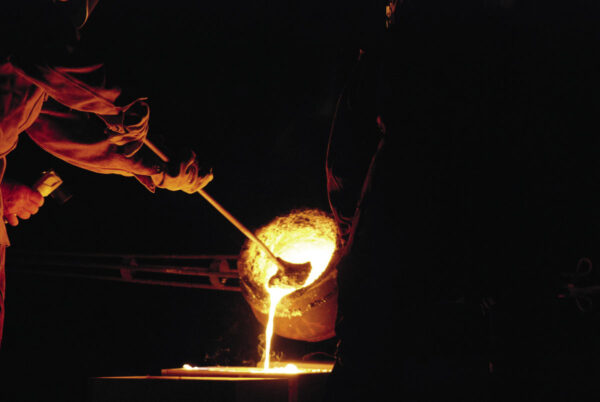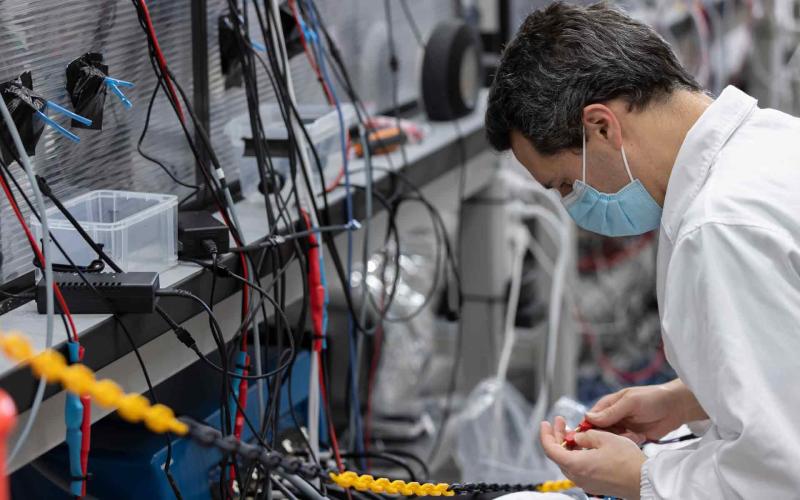The annual State of Hydrogen report highlights that Australia is well placed to play a significant role in the global green hydrogen industry due to its renewable energy potential but warns there’s an urgent need to speed up priority pilot projects and the establishment of hydrogen hubs if it is to compete internationally.
The 92-page report, prepared by the Department of Climate Change, Energy, the Environment and Water, covers the development of Australia’s hydrogen industry so far, how it measures up to international growth, and the path ahead for the industry in Australia.
The report indicates that the local industry is advancing broadly, with Australia home to about 40% of all announced global hydrogen projects. More than 100 ‘clean’ hydrogen projects were announced in Australia in 2022 – more than double the projects announced in 2021.
The Australian pipeline of projects is valued at up to $300 billion (USD 203.5 billion) of potential investment but the report highlights that most of the project announcements in this pipeline are yet to reach final investment decisions.
“While Australia has a large pipeline of announced hydrogen projects, it still trails many OECD nations in terms of projects proceeding to deployment,” the report says, warning that Australia now risks falling behind other countries which are implementing market-based policy mechanisms and new economic incentives to propel their hydrogen industries.
“Australia was the third country to announce a national hydrogen strategy. Today, there are 30 national strategies, with a further seven in development,” the report says. “Australia is no longer the global policy leader in developing a new clean hydrogen industry.”

Image: DCCEEW
The report suggests that to be a global leader in the hydrogen industry by 2030, Australia will need to accelerate its delivery of the early actions identified in the National Hydrogen Strategy, launched in 2019.
“In particular, the advancement of priority pilot projects, the establishment of hydrogen hubs, and the assessment of supply chains will be essential to achieving the scale necessary to compete internationally,” the report says, adding the government may also need to reconsider the introduction of targets and incentives and other measures to ensure its industry is globally competitive.
The department said the next steps will be critical to keeping Australia on the path to be a global hydrogen leader with success relying on industry, governments, researchers and the community working together.
“If we get this right, we can realise our vision to establish a new hydrogen export industry in Australia, unlocking jobs, assisting the energy transition, reducing emissions and potentially unlocking billions of dollars in GDP by 2050,” the report says.
Energy Minister Chris Bowen estimates that Australia’s hydrogen industry could by 2050 generate $50 billion in additional GDP and create more than 16,000 jobs.
“Australia’s regions have the resources, technical skills and track record with international partners to seize this opportunity and become a global hydrogen powerhouse, we need to make sure we don’t get left behind as the rest of the world moves,” he said.
“We know our trading partners are looking to us to supply Australian hydrogen, and our industrial base requires it. We will keep our foot on the accelerator to achieve the scale of industry development necessary to compete internationally.”

Image: Pixabay
The release of the State of Hydrogen report comes after the Australian Renewable Energy Agency (ARENA) announced $50 million for two funding rounds targeting innovation in green hydrogen and low-emissions iron and steel.
ARENA said $25 million will be allocated to each of the funding rounds, with grant funding for successful applicants expected to range between $500,000 and $5 million.
ARENA Acting Chief Executive Officer Chris Faris said the investment rounds will include a laboratory-based research phase, then a commercialisation phase aimed at scaling up, demonstrating and deploying research breakthroughs and technologies in the real world.
“We’re already seeing renewable hydrogen scaling up, but there’s still more to be done to improve efficiency, while storing and transporting the fuel at scale are looming challenges,” he said.
“Iron and steel production represents enormous emissions reduction opportunities for Australia and our trading partners. Globally, these industries make up around 7% of global greenhouse gas emissions, so the decarbonisation opportunity is huge.”
“As global markets increasingly demand low-carbon products, we need new solutions to bring us closer to net zero. And we need to get that research out of the lab and into industrial applications. This work is about future-proofing our iron and steel industries for a low-carbon value chain.”
Expressions of interest for both the green hydrogen and iron and steel R&D funding rounds are due 1 June 2023.
This content is protected by copyright and may not be reused. If you want to cooperate with us and would like to reuse some of our content, please contact: editors@pv-magazine.com.









2 comments
By submitting this form you agree to pv magazine using your data for the purposes of publishing your comment.
Your personal data will only be disclosed or otherwise transmitted to third parties for the purposes of spam filtering or if this is necessary for technical maintenance of the website. Any other transfer to third parties will not take place unless this is justified on the basis of applicable data protection regulations or if pv magazine is legally obliged to do so.
You may revoke this consent at any time with effect for the future, in which case your personal data will be deleted immediately. Otherwise, your data will be deleted if pv magazine has processed your request or the purpose of data storage is fulfilled.
Further information on data privacy can be found in our Data Protection Policy.